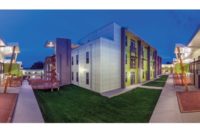Perhaps there’s more money in saving our resources than there is to burn them up recklessly for profit as we have done throughout time. Maybe people in the 1980s finally heard what was said nearly 100 years prior—fossil fuel combustion may eventually lead to increased global temperatures.
A Swedish scientist named Svante Arrhenius is considered by many as the first to suggest a relationship between increased carbon dioxide concentrations in the atmosphere and temperature back in 1896. He thought with growing populations, rising CO₂ levels in the atmosphere could potentially increase the earth’s surface temperatures. No consideration was given to industry growth or burning coal. Because his hypothesis of human contributions alone seemed far-fetched, his suggestions were discarded and life went on.
In the 1980s, satellite images suggested changes in polar ice formations. It was reported that the climate on average was warmer than any time in the last 100 years. In time, these cries gained momentum, in part by media hype. Today, the need to slow the use of our resources and reduce carbon emissions is considered dire. For decades, people have been saying this and very few listened. The urgency to conserve energy and control waste is a global issue regardless of your position on climate change.
Buildings consume the most energy compared to anything else. Continuous insulation is considered one of the most effective and efficient methods available for all structures to slow or control energy consumption. This is especially true for the buildings we have the most of: homes. Traditionally, wood materials were used to construct buildings. CI is easy to incorporate into a new design and build around. CI can be utilized with a variety of wall assemblies. It’s a proven option for older buildings.
With a suitable substrate, they’re easy to retrofit as a more energy conserving building in the form of EIFS, now more often referred to as continuous insulation finish system.
While everybody knows EIFS is the original CI, we have other exterior cladding systems that are also classified as CI. To meet this requirement, only the fasteners are to be considered as an exemption.
Here’s a quick look at four CI systems in the market to better understand CI assemblies. The primary insulations used for CI are expanded polystyrene (EPS), polyisocyanurate (ISO) and extruded polystyrene (XPS).
Continuous Insulation and Finish System
The background of EIFS is well known by W&C readers. Innovations, technology, finishes and system assemblies continue to evolve. The R&D of this industry’s major manufacturers never ends. Thermal value and lower energy use have always been the major benefits of CIFS. Forty years ago, little did we know that CI would be mandated to conserve energy. The CIFS industry went through the ups and downs before any other CI wall assembly was a concept. Resilient, the EIFS producers acknowledged some flaws and made corrective measures. Today, with drainage systems and low VOC products, CIFS is the best bang for your buck. When you need a high performance, environmentally friendly, versatile system with endless colors and details, search EIMA.com. The support is as good as the products of the members.
Insulated Concrete Forms
These forms are a very good innovation in construction. ICFs are mainly focused on the residential sector, although, not exclusive and have been used on buildings up to four floors. The ICF assembly is a concrete “core” encapsulated with EPS or XPS. CI on the inside wall surface and the exterior. The ICF blocks have plastic webs, or “ribs,” usually 6 inches on center. These blocks are interlocked and stacked and are available in different core thicknesses. Reinforced with steel rebar per the engineering design, the cavities of the blocks are ready to be filled with concrete and vibrated to eliminate honeycombs. This is done in phases because of the density of the concrete versus the foam.
Openings in the system are usually framed with wood bucks to receive windows and doors. Completed, it’s a structural concrete mass reinforced with steel and typically 2¾ inch of continuous insulation on both sides that make up the perimeter walls.
CI with Masonry Units (Brick)
Because of the Energy Code, it’s become common in today’s construction market to install continuous XPS or ISO over the WRB and sheathing in a masonry wall assembly. XPS and ISO are usually chosen over EPS because of a greater R-value. The thickness of the insulation may vary depending on the R-value desired. Brick ties must be attached to the structure prior to insulation and they will penetrate the CI.
Innovations in material composition have reduced the energy transfer through wall ties. Care must be taken when cutting around the ties to not damage the insulation. Brick ties, mechanical/electrical penetrations and insulation joints are usually taped to achieve an air barrier. Some energy is lost with the brick ties, but the assembly is much more energy efficient than before.
“Z” Girt Furring
Most W&C readers have probably seen this wall assembly. Z metal furring has been the choice design for a CMU substrate with face brick for decades. This is a preferred assembly for many schools and other buildings designed for an extended service life. A building with this wall assembly is often used as a shelter in disasters. The CMU is placed and ladder wire with loops are utilized to secure the wall ties to. Z girts are also used in framed construction with sheathing. Waterproofing is applied prior to attachment of the Z girts. Z metal is usually orientated vertical on a standard framing layout as to not impede the drainage plane. Properly sized CI is inserted between the Z girts to form a snug fit. Masonry, stucco or another compatible finish system can then be installed. W&C








Report Abusive Comment